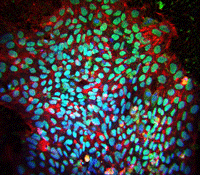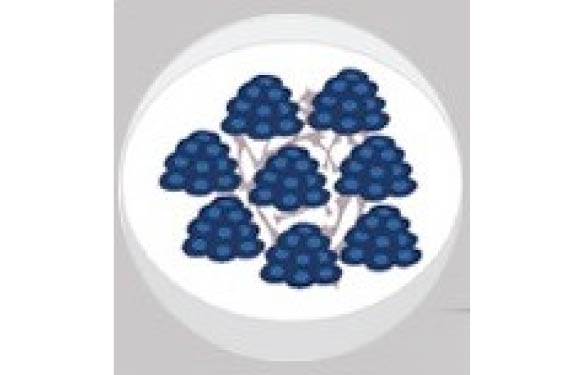Kupffer primary cells are macrophages endogenous to the liver which have the ability to modulate hepatic inflammation and injury associated with various pathophysiologies and toxicities. Pro-inflammatory cytokines released by activated Kupffer cells, such as TNF-α and IL-6, are associated with up-regulation of acute-phase response proteins and suppression of CYP enzymes. For new biological entities, particularly immunomodulators, evaluating the potential for Kupffer cell activation is an emerging concept in preclinical development. Kupffer cells are estimated to comprise approximately 4-8% of total liver cell content and approximately 20% of non-parenchymal cells (Raccanelli and Rehermann, 2006).
Kupffer cells are most commonly used in co-culture systems with primary hepatocytes in drug discovery and ADME-Tox studies. To control the quality and reproducibility of their isolated primary Kupffer cells, Sekisui XenoTech examined 19 freshly plated hepatocyte and Kupffer cell co-cultures for the presence of Kupffer cells. Cells were evaluated for expression of CD68, a general macrophage marker, by immunofluorescent staining after 3 days in culture. Kupffer cells were stained green with an Alexa Fluor® 488-conjugated secondary antibody, while DAPI (4′, 6-diamidino-2-phenylindole) was used as a nuclear counterstain. Kupffer cell content was quantified from 3 images taken from separate wells in a 24-well plate.
Sekisui XenoTech’s fresh plated hepatocyte and Kupffer cell co-cultures contained 0.6% to 24.1% Kupffer cells with a median value of 2.6% and average of 4.7%. The cytokine response of isolated Kupffer cells to stimulation with bacterial endotoxin (LPS) in vitro has been characterized by Sekisui XenoTech’s scientists (Lambert et al., 2013)
The images below illustrate typical composition of the hepatocyte and Kupffer cell co-cultures of four liver donors (selected to emphasize Kupffer cell morphology, they are only a part of the field that was used for quantification of the macrophages)

Sekisui XenoTech’s Kupffer cell thawing and culturing as well as hepatocyte isolation and plating protocols assure that plated hepatocyte and Kupffer cell co-cultures contain a representative quantity of liver macrophages.
XenoTech offers Kupffer cells to aid in the assessment of cytokine release by biologics and small molecule drugs. They have been characterized for the following:
– Cell viability and cell yield
– Functionality: Activation by bacterial lipopolysaccharide (LPS) measured by induction of Tumor Necrosis Factor-alpha (TNF-a) and Interleukin-6 (IL-6) mRNA and protein levels
– Purity: Expression of macrophage marker CD68 (by Immuno-fluorescent microscopy)
Evaluation of the inflammatory response on these primary cells can be further performed by single target ELISA (eg. IL-6, TNF alpha) or simple multiplex assays like Quantibody cytokine arrays or Quansys multiplex ELISAs. All of these technologies are regularly used in tebu-bio’s laboratories and can be outsourced at a reasonable cost. If you’re interested in learning more, get in touch by leaving a comment below!



